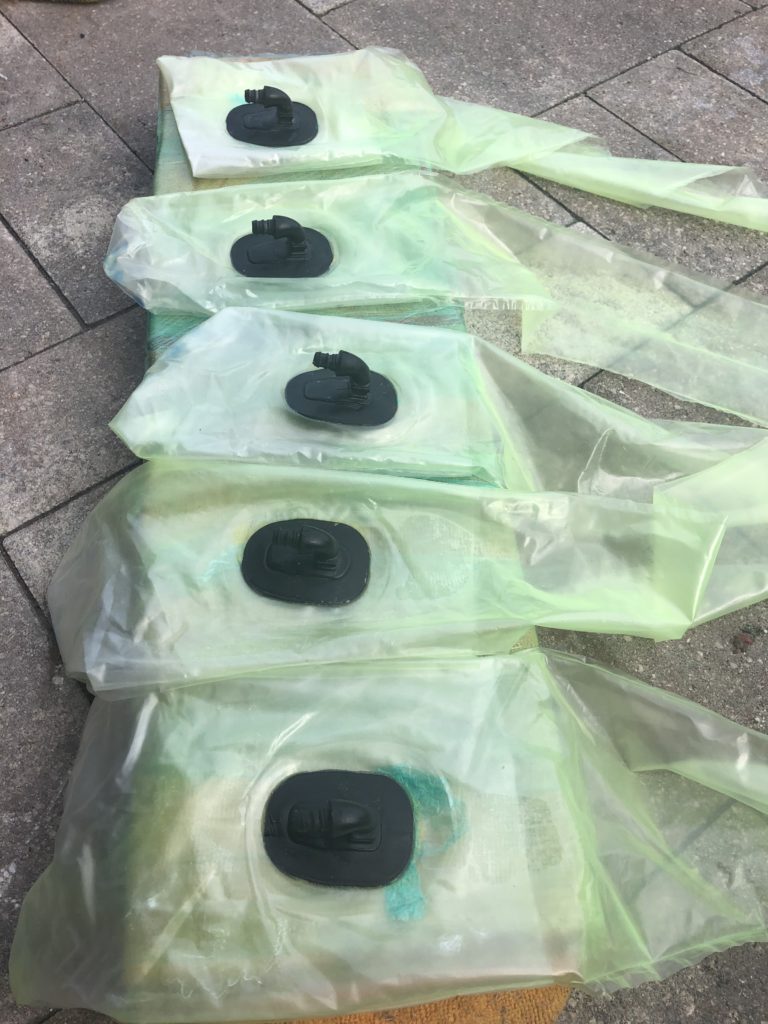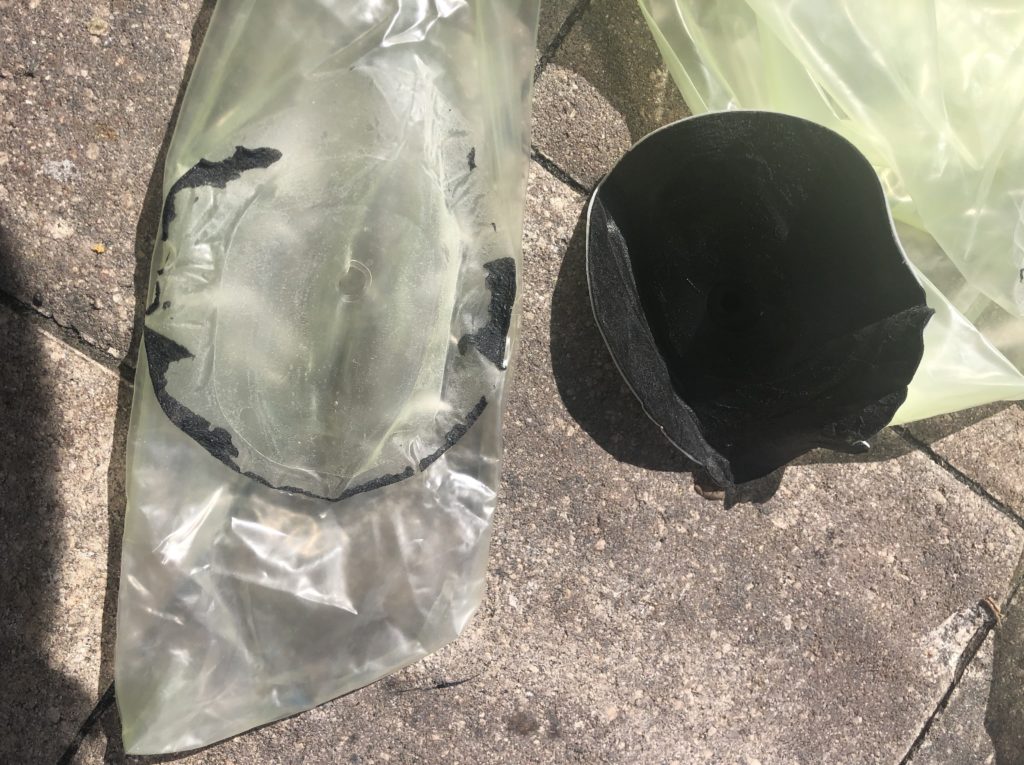
Causes for damage:
- It is widespread that people overinflate their kites. The Leading edge can burst out because seams can’t hold the pressure.
- If the kite is tomahawked with a lot of speed and crashes on the ground, severe damage is caused by the bladder exploding…
- Another damage cause is sand sneaking through the valve into the Bladder when pumping up the kite.
- Sand sliding between canvas and bladder.
- Stings or cuts from sharp objects also cause bladder damage.
- We even had brand new kites for repair because customers got too excited when receiving their kite and using a razor cutter blade to open the box… ouch!
- Bladder material also deteriorates depending on the age, material, and way of storing the kite.

Most Bladders can be repaired. However, if a lot of pinholes occur over time, it is recommended to get a new bladder. We usually use tuff bladders. They are thicker in material and withstand abuse better. Together with our sophisticated compression glue system of the original valves, you can be sure your kite will most likely not have any bladder issues throughout its lifetime anymore…

Modern Kites are designed to get their stability from a bladder inside of the leading edge (LE) and struts. Those “pockets” give the kite the form and the bladders under pressure the stability the kite needs to keep the designed form (wing, C-shape, wing foil…). The bladders need to withstand pressures from 5psi to 12psi or more, depending on the size of the kite. The Kite has enough pressure if it easily holds its shape, and the Leading Edge can’t be squeezed together without much effort. A rule of thumb is:
The smaller the diameter of the leading edge or struts, the higher the pressure.
| Kite size in [m2] | | | inflation pressure in [psi] |
| ____________________ | ______ | _____________________________ |
| 19.0 – 17.0 | | | 4-5 |
| 15.0 – 13.0 | | | 5-6 |
| 12.0 – 11.0 | | | 6-7 |
| 10.0 – 9.0 | | | 7-8 |
| 8.0 – 7.0 | | | 8-9 |
| 6.0 & smaller | | | 10.11 |
Warning: These inflation pressures are only for rough reference.
Temperature, pressure gauge accuracy, and other factors can affect the final inflation pressure of your kite.
We highly recommend that you still use the pressure referenced in your kite manufacturer’s manual for checking the final amount of pressure. Over inflation will shorten the life span of your kite
